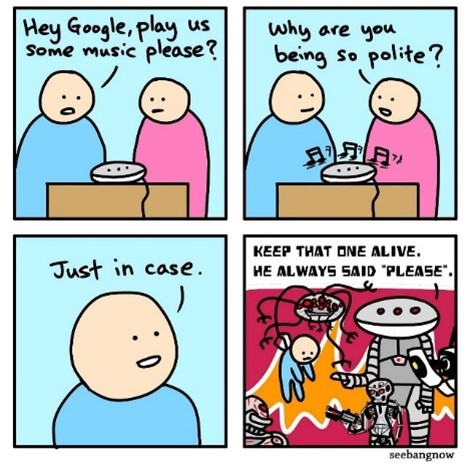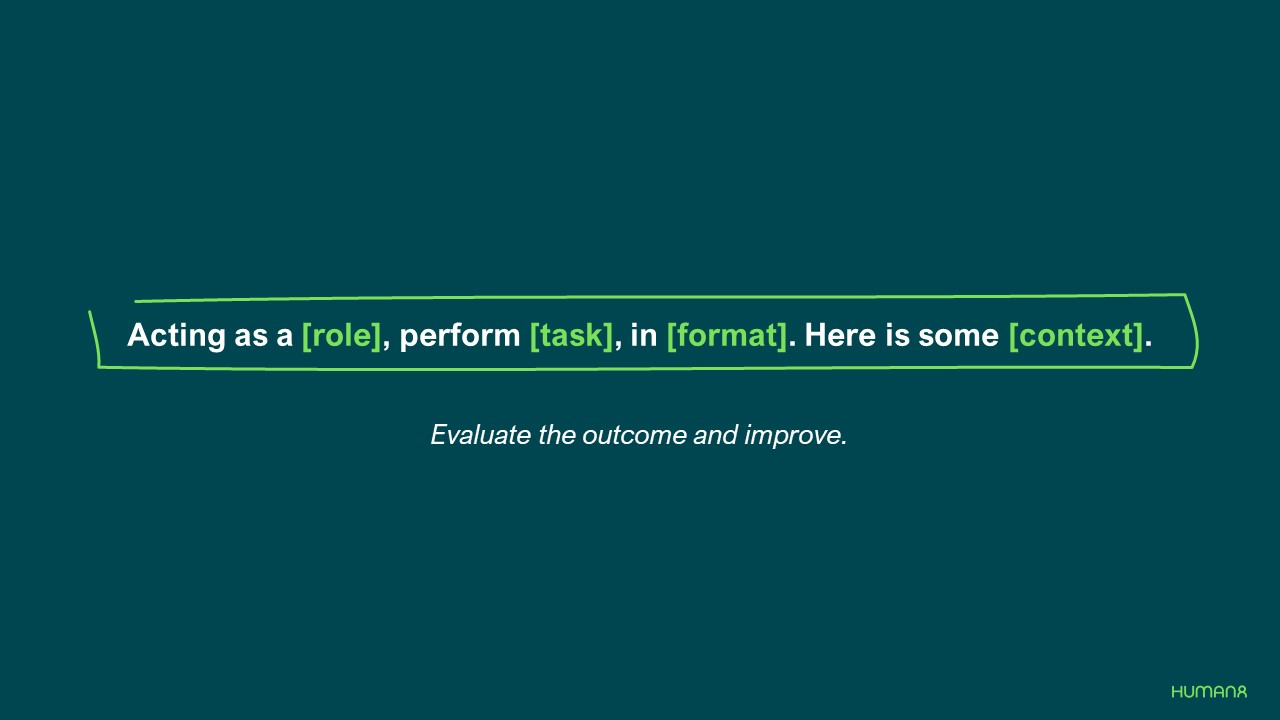Blog
Do you speak prompt? 5 tips to become an AI whisperer
The art of asking the right questions is not only important when setting up a research project, but also to get the most out of AI tools via prompt engineering.


Annelies Verhaeghe
20 September 2023
5 min read
Good prompts are the key to unlocking the full potential of generative AI. Prompts, or ‘AI instructions’ can take many forms, such as text, images, or audio, and are used to train the AI model. But crafting prompts in such a way that the system generates output in line with your needs is a true art. We recently launched our proprietary AI research assistant for Human8 employees to bolster project efficiency and create more room for human interpretation and consultancy. To make sure our consultants get the most out of the tool, more in-depth understanding and training was needed. In comes our employee AI prompt school. In this blogpost we share some of our learnings around prompt engineering. Read on to become a true AI whisperer.
Machines need humans
Human involvement is crucial in prompt engineering. You need to provide AI tools with the relevant context and leverage your subject matter expertise to come to useful content. For example, as consultants we know the sector but also the challenges of our clients which helps us in successfully setting the boundaries and context for AI systems. But finding the most effective prompts is challenging and requires quite some experimentation. It’s important to evaluate the initial outcome and iteratively improve your instructions to achieve the desired result.
Another element that requires human skills is the selection of the right data to feed your AI system. Many of the concepts we refer to in market research such as bias, representativity, and data selection are also present while using generative AI, making it vital to define an appropriate data strategy.
The above clearly indicates that machines without humans do not live up to their full potential. AI systems rely on our human skills to generate useful and relevant content.
5 tips to boost your prompting skills
Our proprietary AI research assistant – using ChatGPT as underlying algorithm – allows us to safely experiment with prompt engineering. Here are our 5 tips to write great prompts.
1. Be clear and concise, using specific keywords
Avoid using complex language or convoluted sentences since this may confuse the model. Also be aware that including specific keywords related to the topic you want to discuss can help ChatGPT focus on the most important elements. For example, if you want to discuss market research, include keywords such as “market research,” “consumer behaviour,” or “data analysis” to help the system.
2. Provide context
Providing context for your prompt can help ChatGPT understand the topic better and provide more relevant responses. If you want to discuss a specific market research study, for instance, make sure to provide background information on the study and its objectives.
3. Put important information first and be clear on what you don’t want to get back
ChatGPT is designed to focus on the most important elements of a prompt. By putting the most important information first, you are signalling to ChatGPT that this information is the most relevant and should be prioritised in generating a response. This can help to ensure that ChatGPT generates more accurate and relevant responses to your prompts. Another technique to increase the relevance of your output is making explicit what you don’t want to get back from the system. For example, by asking the AI tool explicitly not to come back with any (obvious) information you already know. We did the test with our AI research assistant by asking to come up with five needs parents experience that want to make their household more sustainable. This resulted in the output below:

After we received this initial result, we asked the system again to come up with five needs, excluding the ones previously identified. As you can see from the output below, it is perfectly capable of doing that, leading to more relevant and useful answers.

4. Use proper grammar and punctuation while being polite
Using proper grammar and punctuation can help ChatGPT understand the structure of your prompt and generate more accurate responses. But also politeness can have an impact. People often wonder if it is mandatory to be polite to a generative AI system. AI systems are not smart, nor have independent personalities, so you will not hurt its feelings. But it’s important to realise that being polite or impolite will affect the answer you are getting back.

5. Experiment with contextual framing techniques such as role-play
Contextual framing is a technique that involves presenting the same question to an AI system within different contexts or frames to obtain specific outputs.
Role-playing is an example of such a contextual framing technique. Here, you ask the AI tool to act in line with a specific context or persona, which can help it to generate more accurate and relevant responses. You can, for instance, ask it to be a journalist, a psychologist, a programmer specializing in python, etc. We asked our assistant to provide a review of the movie E.T. the Extra-Terrestrial, taking first the perspective of a psychologist and then the perspective of a sociologist.
- Prompt psychologist role-play: “Write a 100-word review of the movie E.T. the Extra-Terrestrial, from the perspective of a psychologist, highlighting the key themes of the movie.”

- Prompt sociologist role-play: “Write a 100-word review of the movie E.T. the Extra-Terrestrial, from the perspective of a sociologist, highlighting the key themes of the movie.”

As you can see, the system zooms in on very different themes, depending on the role it takes. Likewise, we use this technique on confidential client data to extract themes, using different perspectives.
Similar to asking the right questions in research projects, prompting is a creative task. Depending on the problem you are trying to solve, you can try different strategies. There is no right or wrong way of doing so. To help you in writing better prompts, we’ve developed the following formula or prompt structure:

- Role: Think about the role you want the generative AI tool to take. This can be a market researcher, psychologist, social scientist, or any other role that best suits the task at hand.
- Task: Formulate what you want it to do for you.
- Format: Specify the format you are looking for.
- Context: Provide the context at the end.
- Test your prompt, evaluate the outcome and optimise it until you get a good result.
Want to know more about the value of generative AI for market research? Check out our blogs on the AI revolution, supercharging research and the future of AI.
Ready to do what matters?
Let’s connect